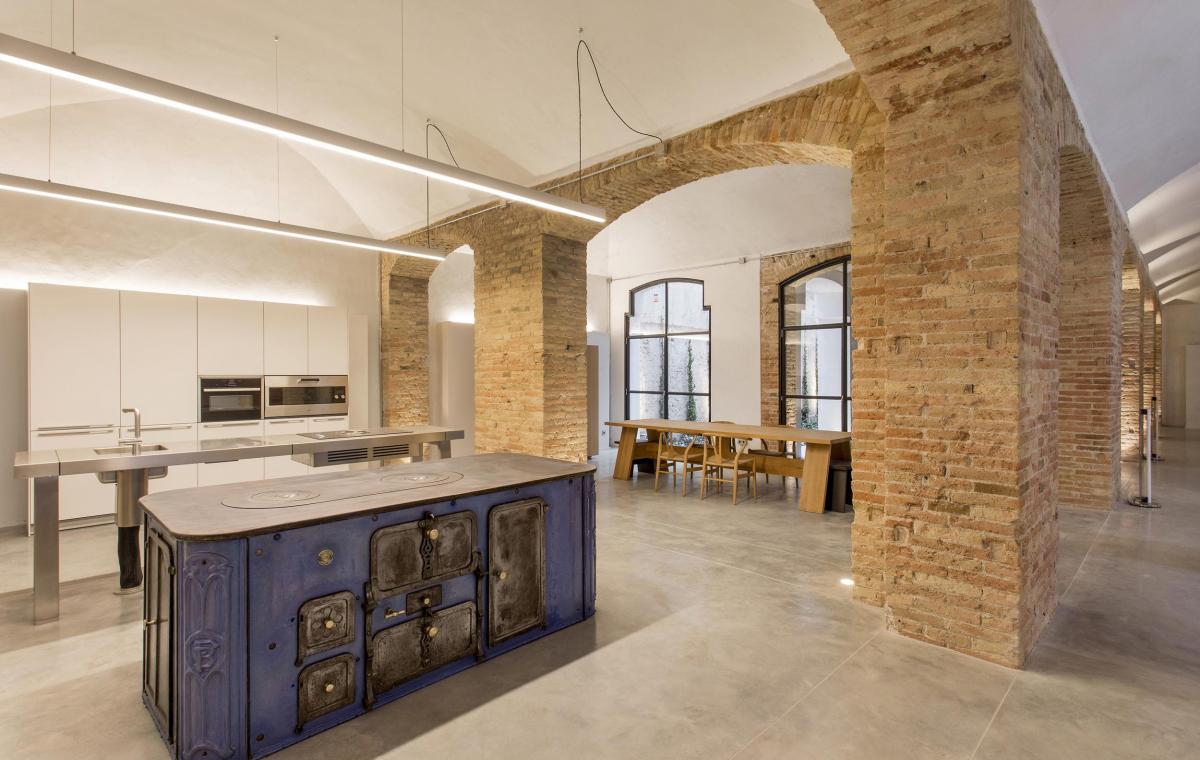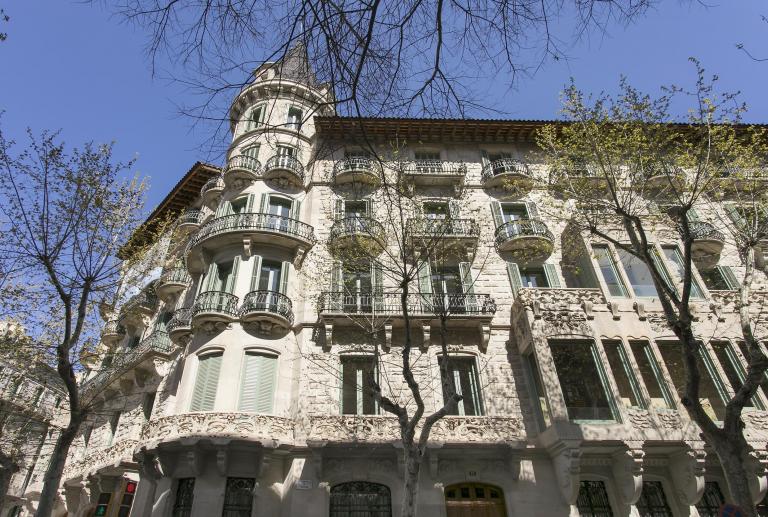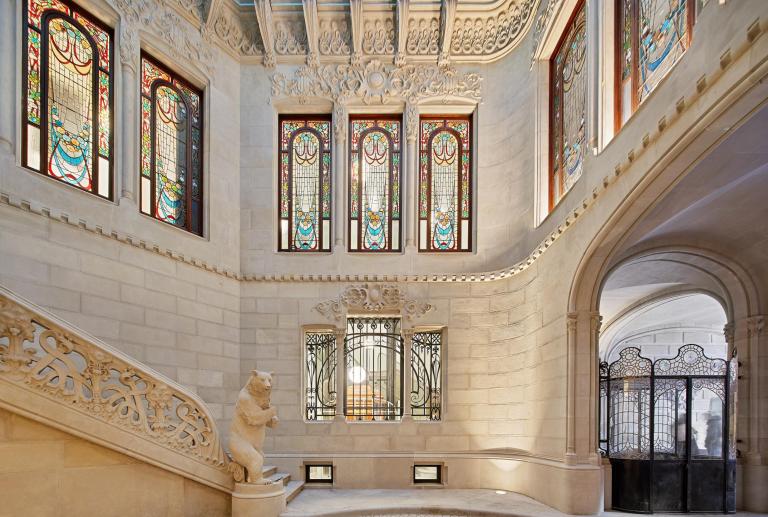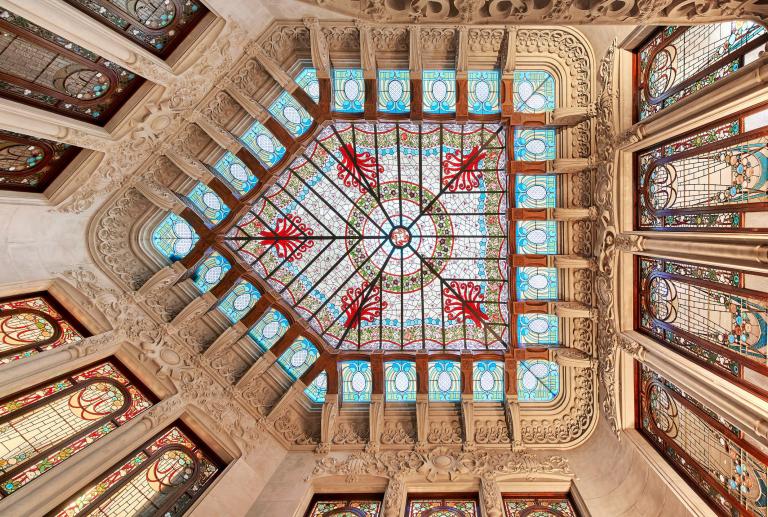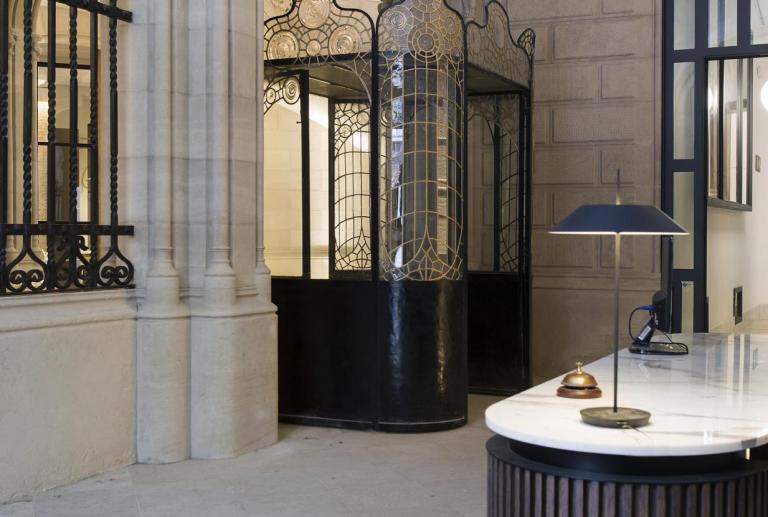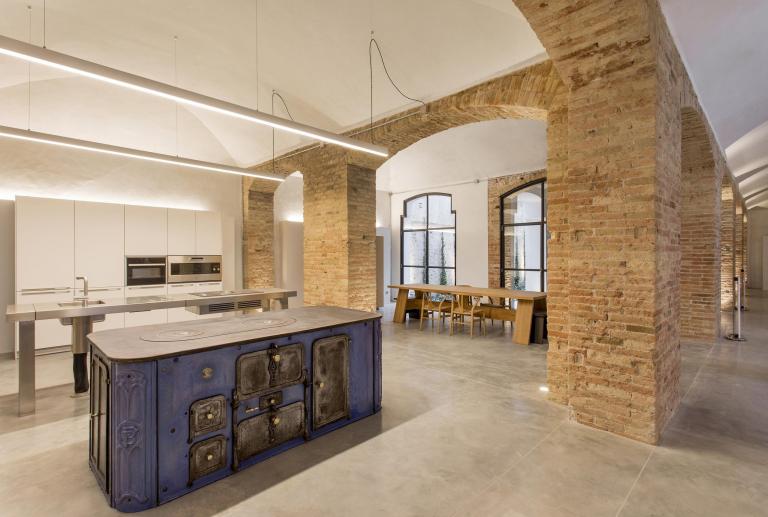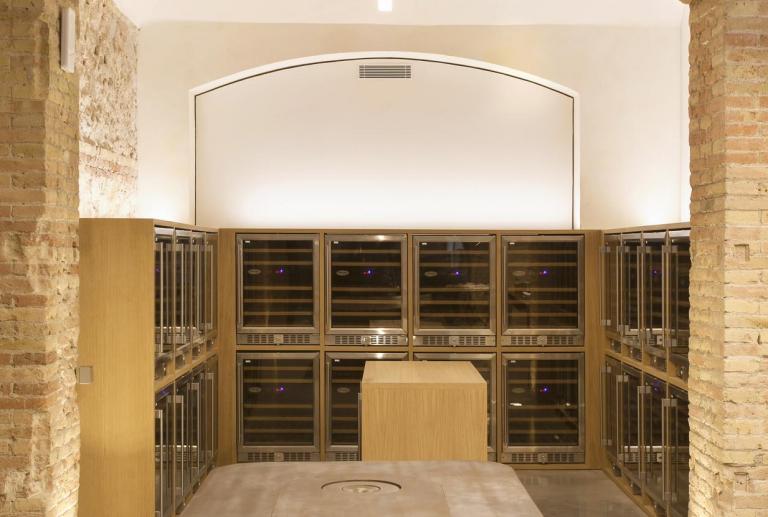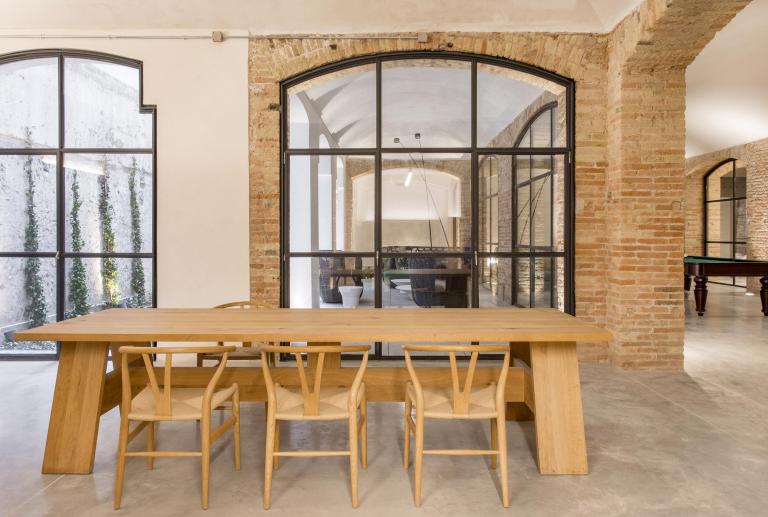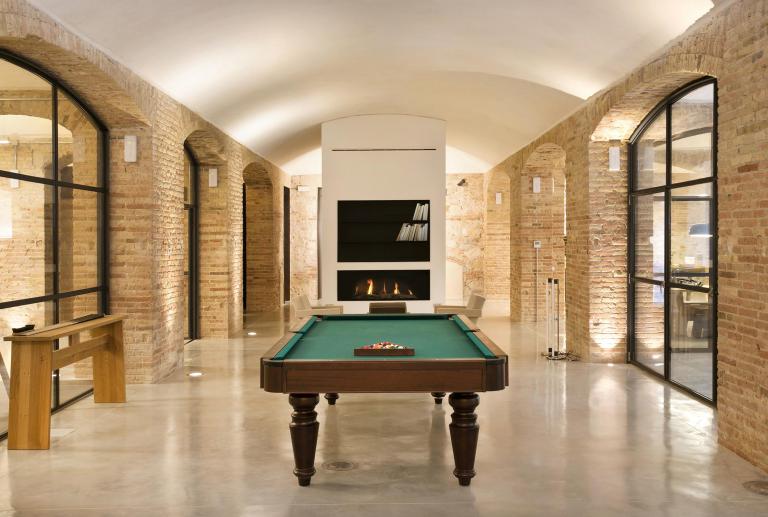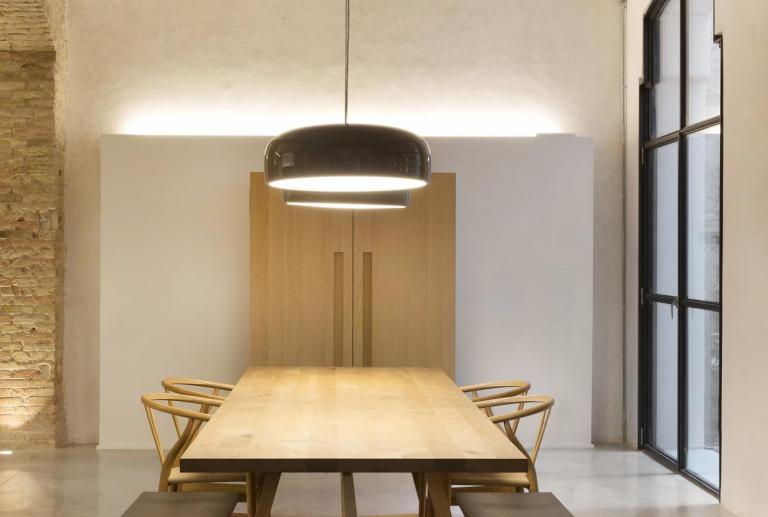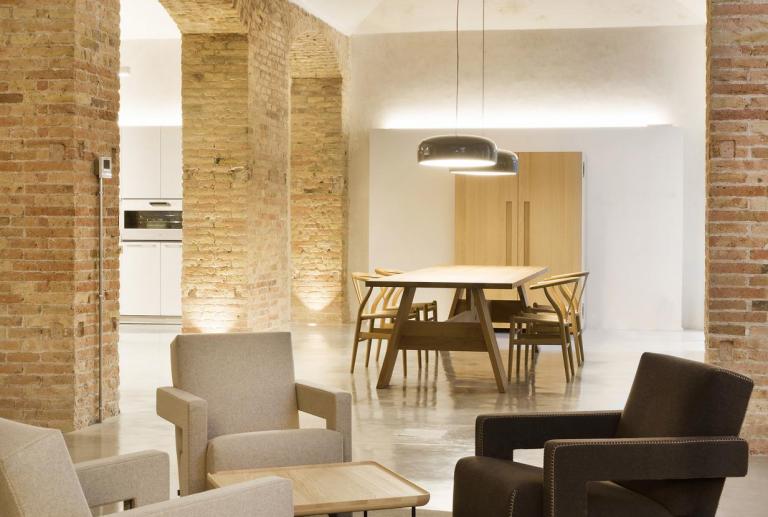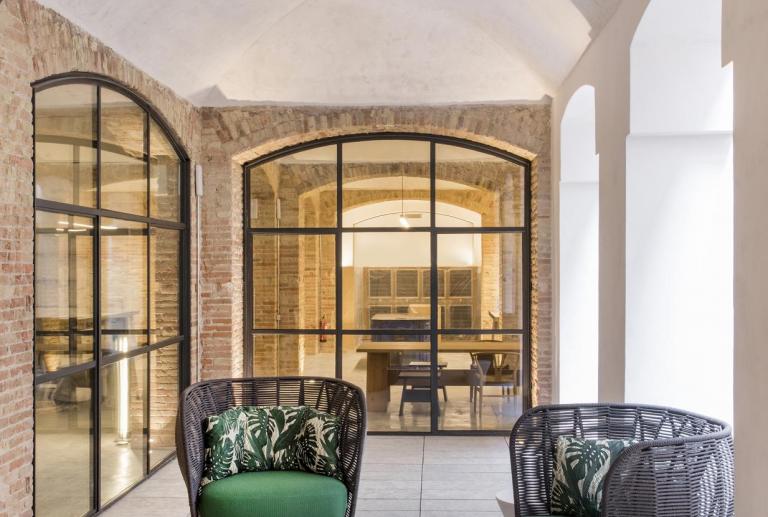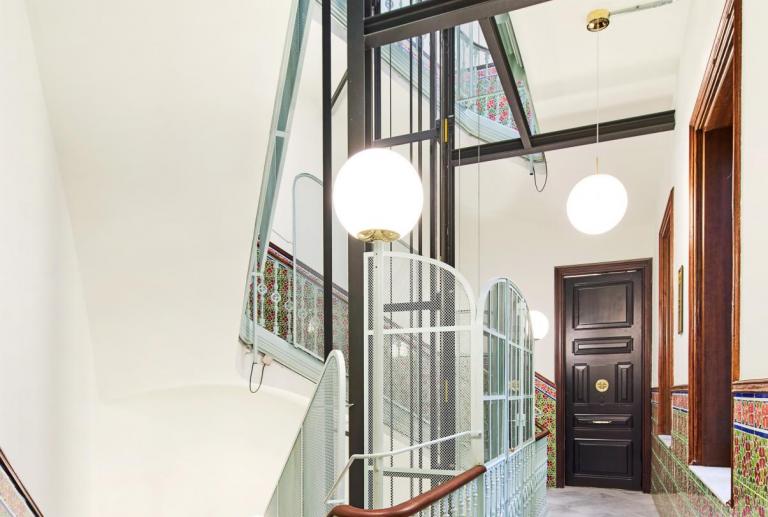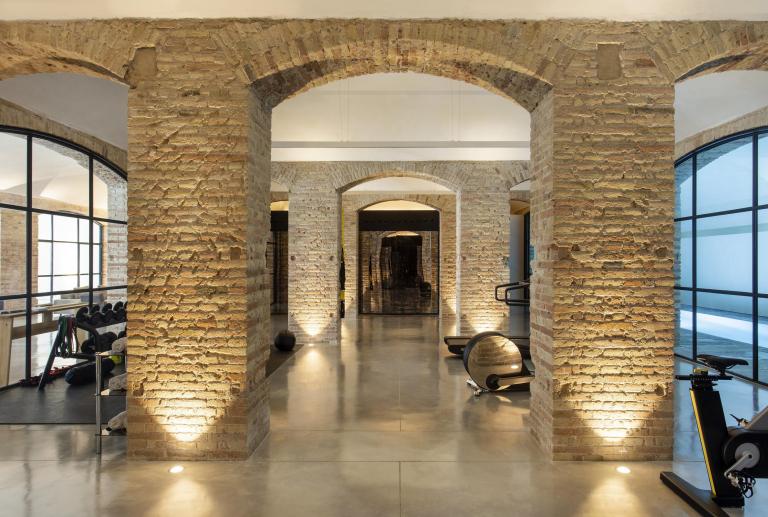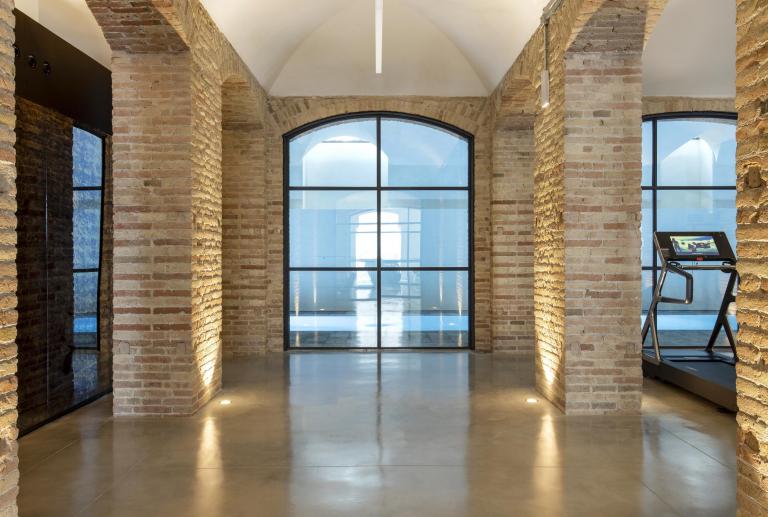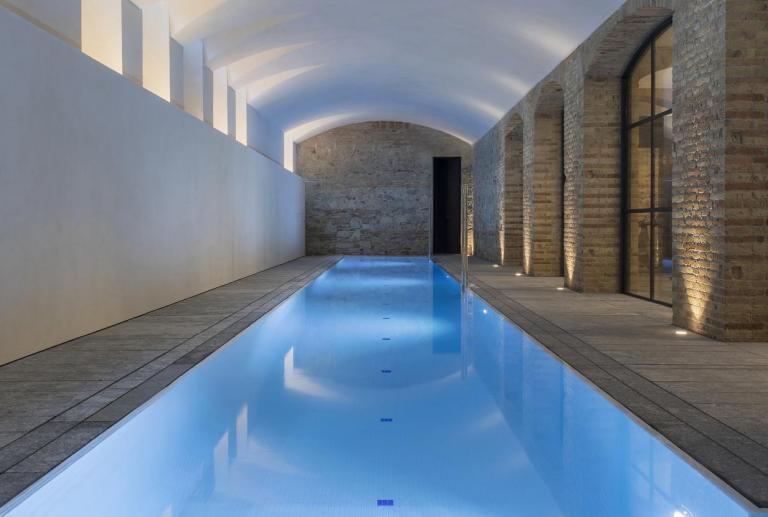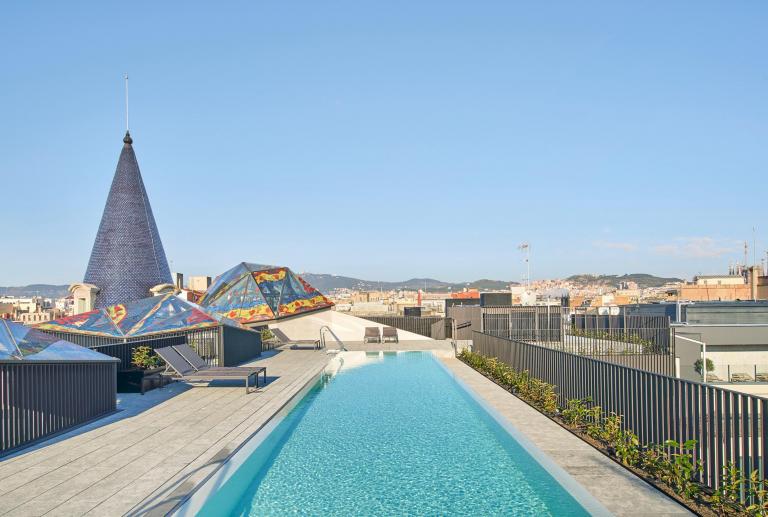Common Amenities, Casa Burés · Interior design project / Barcelona
Spaces that recover its original character
The access halls to the building recover all its modernist splendor as the existing architectural and heritage elements in these spaces were completely respected and restored. The basement -in the past used as storage for the industrial textile company of Francesc Burés- was transformed into a large common amenity zone with an industrial look inspired in its past.
The Casa Burés is Casa Burés is one of Barcelona most beautiful modernist jewels located in the located in the intersection of Ausiàs March and Girona streets. It was built between1900 and 1905 by the architect Francesc Berenguer i Mestres, a close collaborator of Antoni Gaudí. The building was named after its first owner, Francesc Burés, a businessman with one of Spain's most successful textile companies.
The building has 7.700 square meters over six floors which originally were distributed this way: the ground floor of the building was for the textile company and a garage, the first floor with 1000 square meters belonged to the Burés family; the upper floors, which had access with one of the first elevators that were installed in Barcelona, belonged to twelve renting apartments of 300 square meters, and the basement was for storage.
Since 1979 this building is catalogued with a B level in protection category as cultural heritage. This makes the restoration, conservation and maintenance of all the modernist elements in the building essential. A challenge done by the interior designers of the vilablanch studio led by Agnès Blanch and Elina Vilá, and the TDB Arquitectura team, led by Juan Tiras de Bes.
The interior design project of Casa Burés includes the conceptualization, definition and execution of three apartment typologies: lofts, noble residences and superior flats (these include apartments and attics) in addition to the common amenities. Below we present the interior design project done in the COMMON AMENITIES.
The common amenities of the Casa Burés in Barcelona are located in different spaces of the building:
HALLS AND STAIRS
The hall that gives access to the noble residences, where a life-size bear sculpture hugging a lamp receives us. The majestic hall is covered by a skylight and a stained-glass colored window with a pentagonal form. A second hall, with an imposing custom-made desk, gives access to the rest of the building floors, as well as the basement. In these spaces, the interior design concept is the same concept developed for the noble residences: the original architectural and decorative elements have been preserved and restored, respecting and enhancing their original beauty, and they have been accompanied by new materials that do not imitate or compete with the existing elements.
BASEMENT
In the basement we find a large area for community use that includes a swimming pool, a spa, a professional kitchen, a cellar, a dining room, a gym, a terrace and a meeting and entertainment area. The same interior design concept developed for the lofts has been applied to this floor: an interior design that recovers the original industrial aesthetics of this space, which use in the past was as a storage space.
Casa Burés is a residential project which involves 26 luxury apartments among 120 and 500 m2. The interior design project of the building has been carried out by the vilablanch studio and TDB Arquitectura, commissioned by Bonavista Developments.
THE CHALLENGE
The challenge was to transform the Casa Burés, a modernist jewel with a big cultural heritage, into an exclusive residential building adapted to the new contemporary aesthetics and the nowadays needs, with extended common amenities.
To make this challenge possible an interior design that recovers and highlights the original elements of the building was carried out. At the same time, each apartment is adapted to today’s living necessities such as, functionality, distribution and commodity.
TWO KEY AXES OF THE PROJECT
DISTINGUISH BETWEEN THE OLD AND THE NEW ELEMENTS
While doing the elaboration of the interior design project of Casa Burés some specific decisions were taken for each apartment typology, taking into account the original structure and the target. But, at the same time, a clear and important decision was taken for the whole building: restore the elements that were found in good conditions and accompany them with new elements that wouldn’t compete or imitate the old ones.
For this reason we can distinguish between the old and new elements. On the ones hand, the original elements were restored with craftsman’s techniques of the epoch (Nolla pavements, polychromise ceilings, elaborated mouldings…). On the other hand, the new elements don’t compete with the existent (new pavements, ceramics, furniture…). An elegant interior design was chosen which recovers and enhances the valuable architectural and decorative elements that are part of modernism, and accompanies them with materials and contemporary elements just as refined.
DEVELOP A SPECIFIC INTERIOR DESING FOR EACH APARTMENTS TYPOLOGY
3 interior design concepts were defined and developed, taking into account the original characteristics and structure found in each space. The interior design team developed three concepts for three different apartment modalities:
· An interior design concept for the 3 lofts located in the ground level and the common amenities in the basement: Industrial aesthetics inspired in its past.
· An interior design concept for the 2 noble residences located on the main floor and for the building's halls: Absolute respect for existing elements.
· An interior design concept for the 16 flats located in the 1st, 2nd and 3rd floor, an the 5 attics located in the 3rd and 4th floor (two of them are duplex): Clear separation between the old and the new elements
The interior design project carried out a precise election of the different materials and finishes in each apartment and in the common amenities: pavements, facings, colours (of floors, walls, furniture…) kitchens, bathrooms, doors, knobs, handrails, lighting, furniture, etc…



